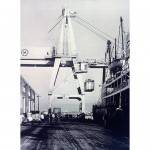In Situ Boom Extension Process — 2021
Liftech developed a concept rig and procedure to extend a container crane boom up to approximately 8 meters without needing a land-based or floating crane and without removing the boom. Using the Liftech system, new boom sections are installed waterside of the outer forestays near the boom tip using a containerized rig that is assembled on-site.

Removable Seal Plate — 2020
Liftech designed a removable seal plate that is not welded to the structure and can be removed and reinstalled as required. This eliminates the fatigue details of the seal plate and its welding to the crane. The removable seal plate consists of a rubber gasket that is clamped in place on the crane. To ensure the seal plate is watertight, the pipe member is pressure tested after the seal plate is installed.
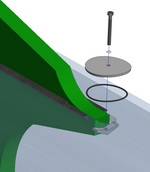
Balance Crane — 2019
Liftech developed a new crane concept, the Balance Crane, that can reduce the weight and wheel loads of very large STS cranes.
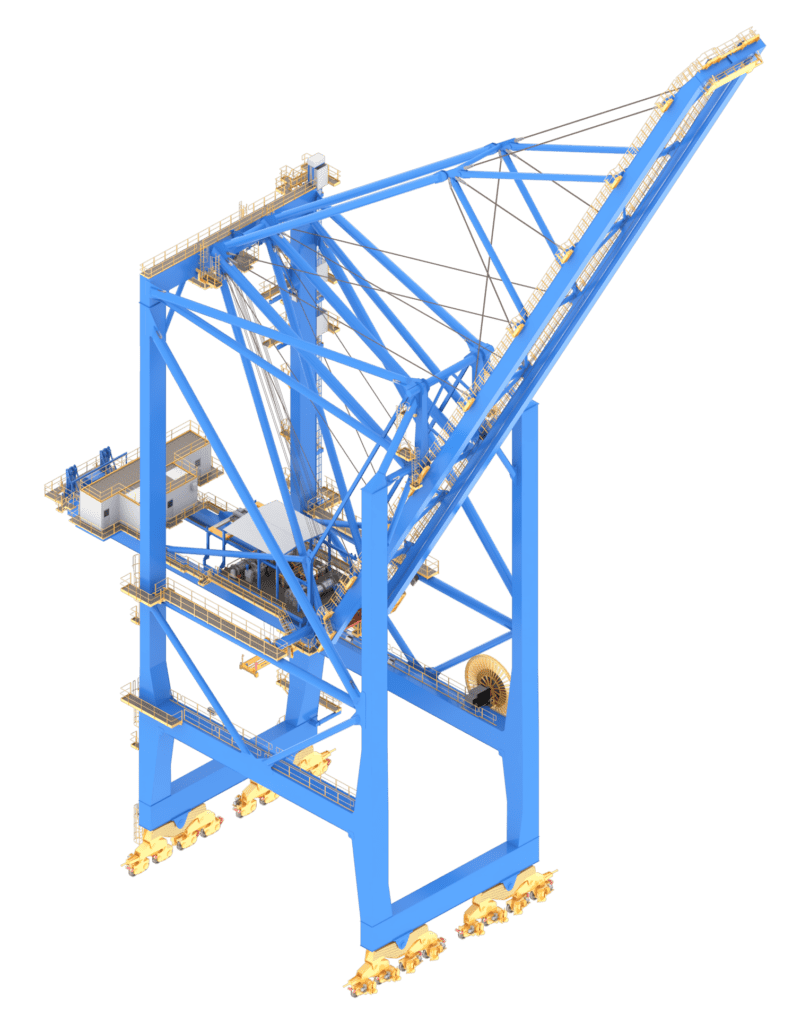
Seismic Isolator and Damper Design — Since 2005
Liftech has developed multiple seismic isolation and seismic damping designs to control the seismic response of cranes.
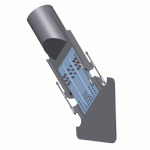
Ductile Link — 2000s
Ductile links in tie-downs were created to address the problem of overloading and failure of crane tie-downs during a large wind event. A tie-down secures a crane to the wharf during large storms to prevent the crane from blowing down the wharf and colliding with other cranes and objects. The ductile link is put into the tie-down “chain” to stretch (not break) when it reaches a certain load, thus preventing overload of the rest of the tie-down.

First Indented Berth — 2000
Liftech participated in the conceptualization of the indented berth facility allowing cranes to work between the indented berth and a straight berth.
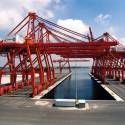
First Ductile Wharf Shear Key Design — 1999
Shear keys connect wharf sections at expansion joints permitting relative longitudinal movement between sections while restraining transverse movement. Shear keys experience large loads during earthquakes and are sometimes damaged. Traditionally, keys have been made of reinforced concrete. The ductile shear key is made of a steel beam. It will yield in a large earthquake and provide significant energy absorption and damping through multiple cycles of deformation. The beam can be easily removed and replaced.
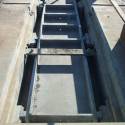
Articulated Boom — 1984
Liftech designed the world’s first articulated boom. Similar to the low profile crane, the articulating boom was designed to provide aircraft clearance. The original design used wire ropes to hold the articulated portions of the boom. Later designs used linkages.
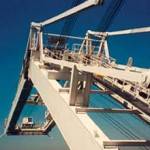
Crane Analysis Software — 1980s
Liftech developed a proprietary program for the design and analysis of quay cranes and other container handling equipment. The program is capable of designing or analyzing cranes for the various international standards. We have licensed the software to select crane manufacturers.
For more information, please visit our Software section.

First Banded Prestressed Concrete — 1971
Liftech invented banded prestressed concrete, which simplified what used to be an intricate weaving problem. On January 6, 1972, Engineering News Record recognized banding as a significant advancement and gave the inventors “Men Who Made Marks” awards. Banding is now a standard and is recognized as a prestressing “milestone.”

Fatigue Tolerant Detailing — 1970s
Liftech was an early pioneer and advocate of fatigue tolerant detailing in the container crane industry, researching details from other industries and developing details suitable for container cranes. Liftech developed and standardized many of the details that are commonly used today.
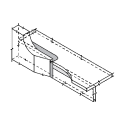
First Structural Maintenance Program — 1970s
After several failures, Liftech pioneered the development and implementation of structural maintenance programs that maintain the structural reliability of dynamically loaded structures.
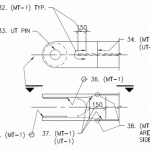
First Low Profile Crane — 1964
Liftech designed the world’s first low profile container crane structure for Paceco. This crane permitted the servicing of container ships in locations with strict aircraft clearances. The booms of these cranes are not raised to clear a ship, but slide within the crane’s O-frame on roller supports.
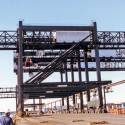
First RTG Crane — 1960s
Liftech designed the first rubber tire gantry crane. This crane was designed for the warping caused by the 6 inch height differential between diagonal corners. All modern RTGs have imitated this structural form.
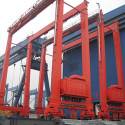
First Wire Rope Damper — 1960s
Liftech developed the first wire rope dampers used on container cranes to interrupt excessive wind-induced vibrations of flexible structural pipe members subject to steady winds. This is now an industry standard.
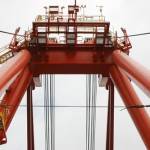
First Trapezoidal Girder — 1960s
Liftech designed the first trapezoidal box girder that is commonly used to support the trolley on container cranes. The design was developed to reduce the stresses at the less tolerant fatigue details near the trolley rail and was carefully designed for this purpose.
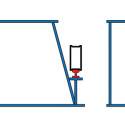
First Modern Container Crane — 1958
Mike Jordan of Liftech designed the structure for the world’s first modern container crane that was built by Paceco in Alameda, California. Mike and Liftech have been an integral part of the evolution of container cranes since that time.
